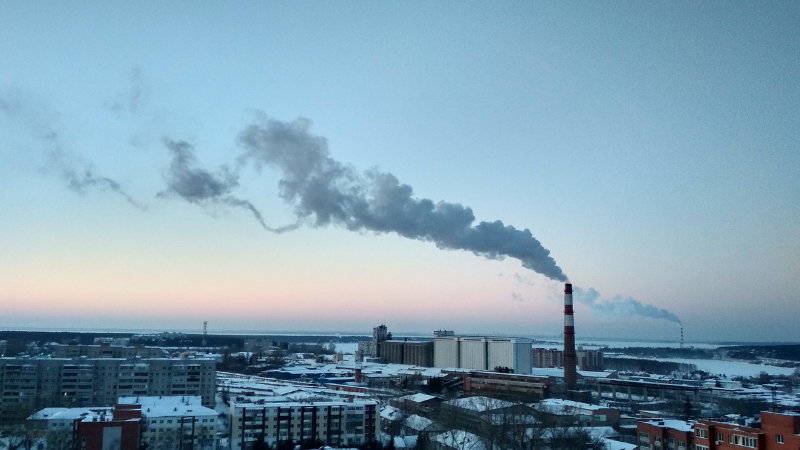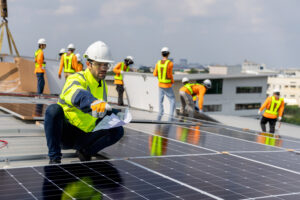In the ever-evolving landscape of environmental regulations, Local Law 97 has emerged as a transformative force, particularly for buildings in New York City. To avoid fines and ensure compliance, crafting a strategic decarbonization plan is not just prudent but imperative.
As we approach 2024, the first compliance period for New York City Local Law 97, staying abreast of regulatory changes is pivotal for businesses. The New York City Accelerator, an authority in the City’s building energy laws states that a 2022 city analysis concluded “11% of buildings required to comply with the law exceeded emissions limits for the 2024-2029 compliance period.”
On the road to decarbonization and compliance, building owners first need to understand their impact. In this post, we delve into the essential steps of creating an impact analysis for buildings planning their compliance strategy with NYC Local Law 97. We also look at how to turn this impact analysis into a decarbonization roadmap.
Understanding Local Law 97
Nearly 70% of New York City’s carbon emissions come from fossil fuels used to heat, cool, and power its buildings. Enacted to address climate change concerns, Local Law 97 mandates stringent carbon emission limits for buildings larger than 25,000 square feet. Buildings that exceed annual emissions limits will face annual fines of $268 per ton of CO2 emitted over the limit based on 2024 energy usage and emissions.
Steps to Create an Impact Analysis
1. Gather Data
The first step is conducting a thorough energy audit to understand the building’s current carbon footprint. Collect pertinent data about your building’s energy usage, emissions, and current efficiency measures. This includes utility bills and energy consumption records. Pinpoint the primary sources of emissions within your building, including HVAC systems, lighting, process loads, and overall energy consumption. Understanding these sources is crucial for devising effective mitigation strategies. Our team at Big Shine Energy typically accomplishes this first task through a Level 2 Energy Audit.
2. Benchmarking and Compliance Tracking
Utilize benchmarking tools to compare your building’s performance against industry standards. This establishes a baseline for compliance tracking and guides the setting of realistic reduction targets. New York City already requires this through Local Law 84. Buildings must submit benchmarking data annually in order to provide transparency for energy and water usage in the city. This further informs building owners on how to make their buildings more efficient.
3. Energy Efficiency Measures
Evaluate the energy efficiency measures already in place and identify opportunities for improvement. Upgrading systems, adopting energy-efficient technologies, and optimizing operational practices can significantly impact your carbon footprint. This evaluation is also done through a comprehensive energy audit. And New York City has implemented other local laws to encourage building owners to look at specific measures, such as energy efficient lighting.
4. Renewable Energy Integration
Explore the integration of renewable energy sources like solar panels or wind turbines. Assess the feasibility of these solutions based on your building’s structure and location. Local law 92 and 94 require building owners to cover all available roof area in solar or green roofs.
5. Evaluate Retrofit Options
Consider retrofitting existing systems for enhanced efficiency. Upgrading insulation, windows, and implementing smart building technologies can contribute to emissions reduction.
6. Financial Impact Assessment
Conduct a thorough financial analysis of proposed changes. Evaluate the upfront costs, potential savings, and return on investment. This step is crucial for making informed decisions aligned with your budgetary constraints.
7. Building Energy Modeling
Engage with professionals experienced in energy modeling who can provide you with realistic reductions based on the energy efficiency measures you’re considering to invest in. This step is crucial in creating an impact analysis.
Once you understand your building’s emissions, understand what your building’s emissions limits. Then create your decarbonization plan. These steps are not just to comply with NYC Local Law 97, but they will serve as a catalyst for corporations across the globe to become more sustainable.
This multifaceted process demands meticulous attention to detail. At Big Shine Worldwide, we understand the significance of proactive compliance. As your partner in sustainable solutions, we are committed to helping you navigate the complexities of energy management and emissions reduction and make a positive impact on both your building and the environment.




